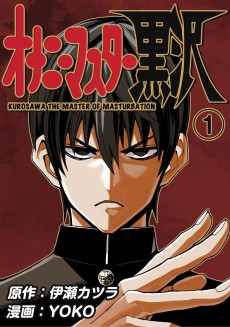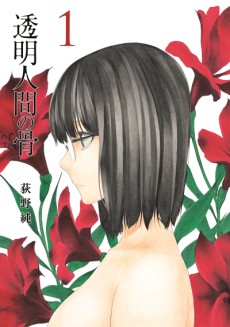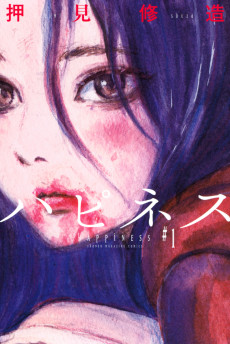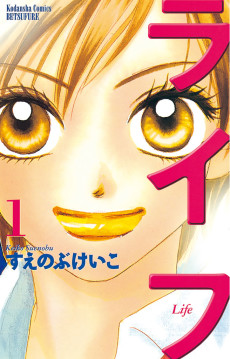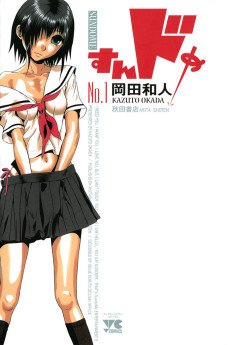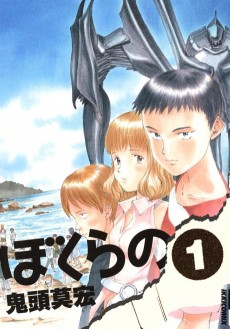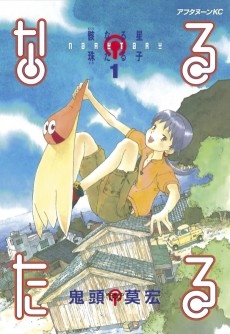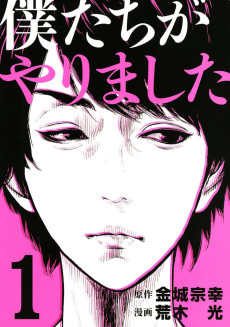AKU NO HANA
STATUS
COMPLETE
VOLUMES
11
RELEASE
May 9, 2014
CHAPTERS
58
DESCRIPTION
The story opens as middle school student Takao Kasuga receives an F on a math test. But he doesn't even seem to notice because he's too engrossed in surreptitiously reading Beaudelaire's The Flowers of Evil. And the day goes downhill from there. In a moment of weakness, he finds and takes home the gym clothes belonging to sweet, pretty Nanako Saeki on whom he has a major crush. Unfortunately for Takao, there's a witness to the theft: Nakamura, who has a huge chip on her shoulder and a sadistic streak.
As the saga unfolds, we see Takao struggling to decide whether to confess or cover up his misdeeds at the same time that he tries to win over the girl of his dreams, and avoid the blackmail attempts of Nakamura, his new ”BFF.”
Smart, funny, and emotionally engaging, The Flowers of Evil introduces a character who's not a hero, but just an ordinary teenager in search of true love and real friendship.
(Source: Kodansha USA)
Note: Includes 1 extra chapter.
CAST
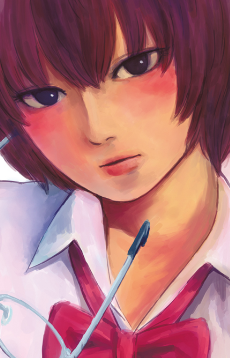
Sawa Nakamura
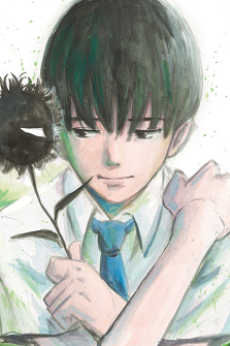
Takao Kasuga
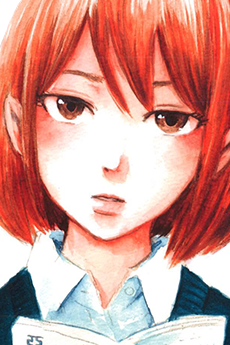
Aya Tokiwa
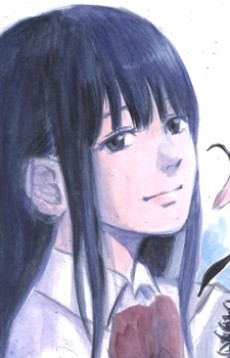
Nanako Saeki
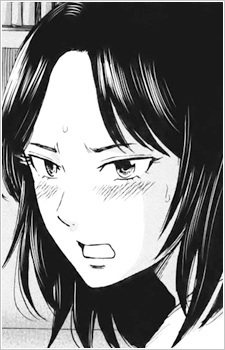
Ai Kinoshita
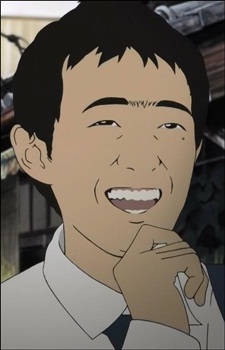
Ken Kojima
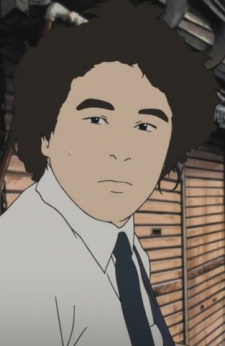
Yamada Masakazu

Koizumi
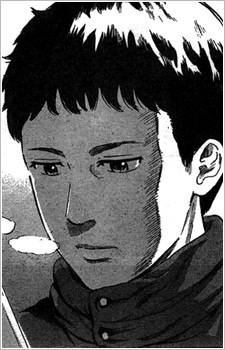
Kouji Fujiwara
CHAPTERS
RELATED TO AKU NO HANA
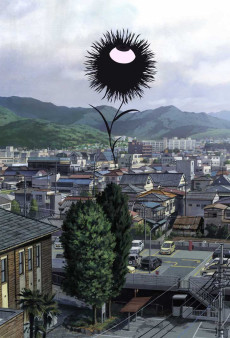 ANIME DramaAku no Hana
ANIME DramaAku no HanaREVIEWS

Pockeyramune919
100/100Flowers of Evil is a perverted and provocative masterpieceContinue on AniList
I finished the Flowers of Evil a week ago and I’ve been putting off rating the psychological drama manga. A reason for this is wanting to offset recency bias. Great works should leave a mark. Therefore, if I find that the memory of an anime or manga doesn't stick with me, I’ll often lower my rating. In order to be sure that my glowing reception of the manga wasn’t simply due to finishing recently, I waited. After waiting, I have no doubts that I love Flowers of Evil. It’s wickedly terrific.
The very premise itself encapsulates everything I adore about this series. Takao Kasuga is a middle school boy living in the sleepy town of Kiryu, Gunma, Japan. Throughout the series, the town is described as stifling. The blandness of the town is felt particularly by Kasuga, who is often described as “gloomy” by his peers. He’s often engrossed in Charles Baudelaire’s volume of poetry, Les Fleurs du Mal. Kasuga’s most damning characteristic is his obsession with his popular classmate, Nanako Saeki, whom he considers an angel and his muse. One day, he returns to class after school and finds Saeki’s bag of gym clothes. On impulse, he steals it and is seen by Sawa Nakamura, a crass an eccentric girl in his class. Nakamura makes Kasuga form a pact with her in exchange of keeping her lips sealed regarding the theft.

Flowers of Evil is perverse, and that fact is front and center in the first chapter. Know that the depravity and suffering will get far, far worse. The situations that Kasuga finds himself in are quite anxiety inducing, so reading Flowers of Evil is often quite unpleasant. Reading the first chapter or so is enough to gauge if you’re into this type of story or not. It’s a psychological drama for a reason, and if you’re someone who has a history with trauma or severe anxiety, you most likely won’t gleam any benefit to reading Flowers of Evil. If you accept that, for most of its duration, Flowers of Evil is a series of increasingly unfortunate events, then buckle in for a wild ride. I felt that Kasuga got everything that was coming to him at first, but I soon started to feel for the kid as his punishment began to feel disproportionate. There are a few pockets of hope in the story, but they’re soon dashed by more misfortune.
Flowers of Evil is a trainwreck in all the right ways. You know something horrible has, is, and will happen, but you continue to read because you just need to see what happens next. As much as Flowers of Evil is perverse, it’s provocative. It’s hard to put the series down for even a moment, and when you’re not reading it, you’re reflecting on what happened and what will happen next. This makes for a truly exhilarating reading experience. The person who introduced me to the series binged it in three days. I was originally just going to read the first volume for the manga club, but I found myself clamoring for more, finishing the maga in less than two weeks. At fifty-seven chapters, the Flowers of Evil doesn’t overstay its welcome at all.
I enjoyed the Flowers of Evil’s connection to literature. It’s hard to miss - the title itself is the same as Baudelaire's poetry collection. If you’re having a hard time getting into the mind of Kasuga, I’d recommend reading some of the collection. It sets the tone frighteningly well.
Another thing that sets the tone is the art which is deceptively normal. At times, the art looks quite innocuous, serving as a great contrast to the story’s dark themes. The artwork can also be said to symbolize the nature of the town. However, when the mangaka wants to accent the depravity, he uses darkness and shadows to a chilling effect.

The characters really help The Flowers of Evil be as great as it is. Every major character has hidden depths such as the seemingly perfect Saeki having issues relating to wanting to please others; thus explaining the reason why she’s seen as perfect. Nakamura, while still frustrating due to arguably being the source of the situation getting as out of hand as it did, still has reasons for acting in the way she does. They’re not necessarily good reasons and they’re not that fleshed out, but I think part of the fun is filling in the gaps. They’re not plot holes by any means; just not handed to the reader. Finally, we have Takao Kasuga. As I hinted at earlier, I really didn’t like him at first, but he grew on me. Part of why I find him so compelling is the fact that he is, in a way, relatable. In some ways he’s an exaggeration of aspects of ourselves. Most people have had a crush on someone. A lot of people have felt truly alone. Some have felt perverted and obsessive. I think the Flowers of Evil, especially its ending, really speaks to these people. While I’m sure there are a lot of people who can’t connect to Kasuga at all, I’m sure many will find themselves surprised at the aspects of themselves that they find in the character.
I also like that, despite the outlandish situations the characters find themselves in, the world itslef is realistic. What I mean by this is that the characters reacting to the outlandish situations react in ways that are realistic, thus not taking me out of the story. I’d say real in relation to Japanese culture, but as a western reader, I didn’t find a lot of culture shock. Turns out small town experience is similar whether you’re Japanese or American.

Spoilers for the last third of the story.
To some, a story is only as good as its ending. I’m not quite that extreme, but I do acknowledge the importance of a solid ending. Despite Flowers of Evil having an ending that largely departs from the story structure up to that point, I thought the ending was great. In fact, I think the ending being the way it is enhances the manga and makes it a masterpiece.
Chapter thirty-three is the peak of the manga’s drama. Everything that has occurred thus far leads up to this point. In other words, this is the climax. This is important to note because it justifies what happens afterwards. The climax is the height of the story’s action, so there’s nowhere to go but down.
After Nakamura and Kasuga nearly lose their lives, it’s decided that they will need to move away and we are treated to a timeskip. Kasuga is now a high school student. We see the effects of the events of the first part of the story: Kasuga is a shell of a man, haunted by his past.

However, unlike before, things look up for him. Things get better and they stay better. It’s surprising, given the trajectory of the story before. Quite frankly, it’s damn refreshing.
People might find the ending boring, but I find it uplifting. Kasuga’s life starts to change and I feel it’s an important message for people going through tough times and people who consider themselves to be misfits. Mangaka Shūzō Oshimi once remarked that the final third of the story is the one that he wanted to write. In this, it’s clear that the last third is the takeaway so to speak. Bad things happen, but we must find the strength to walk away from it towards a brighter tomorrow.Many stories have fucked up characters. This is an art in and of itself, and assuming things didn’t get better for Kasuga, Flowers of Evil would still be at least an eight for me. However, it’s notable that an author tracks a character’s path to rehabilitation, and Kasuga’s recovery in what really makes Flowers of Evil special to me. Going in, I expected a character to die by the end and I was pleasantly surprised to see that this wasn’t the case. I ultimately think twenty more chapters of the same grim thing could have gotten tiring and could have led to lead to Darkness Induced Audience Apathy.
The final chapters have a few loose ends and aren’t the most conclusive of endings but what can I say, I’m a sucker for open-endings. And you want to know what else I’m a sucker for? Bookends. I love bookends. The final chapter is simply a few of the early chapters form Nakamura’s perspective.
Overall, I’m pleased to say that Flowers of Evil is a story that will stick with me. It’s a ride from start to finish. It’ll make you nervous, it will make you angry, and it will make you smile, too. At the end of the day, a good story is one that elicits a wide range of emotions from its readers. A good story is one that lingers in its readers’ minds, long after finishing.
Because Flowers of Evil does this, I cannot, in good faith, call it a good story.
I can only call it a masterpiece.



ronaldinhosoccer99
88/100A necessidade de coexistir com a própria perversão.Continue on AniListAku no Hana me serviu como um importante exercício de reflexão e regressão a difíceis momentos da vida. Uma vez que experiências duras são intensamente marcantes, cada uma delas tem seu significado particular a cada um de nós. Diante isso, percebo que a forma de lidar com tais eventualidades é capaz de desencadear diferentes condutas e até constituir alguns traços de nossa personalidade. Acima de tudo, somos seres humanos e, pasmem, dotados de objetivos, virtudes, desejos e, da mesma forma, de medos, inseguranças e perversões.
Tal idiossincrasia residente da estrutura dos atos humanos vem sendo, assim como sua natureza complexa, um objeto de análise de inúmeras obras acadêmicas e literárias ao longo da história. Nesse contexto, prolonga-se a contínua alternância da expressão de uma qualidade humana ora exposta na racionalidade e na busca por uma essência ordenada e equilibrada; e ora manifesta na instabilidade de um ser dominado pelo ímpeto de suas próprias emoções. Em meio às inclinações apresentadas através das diversas escolas literárias conhecidas, as características do Simbolismo estiveram devidamente posicionadas em meio ao "conflito conceitual" referido, assim como um de seus principais representantes, Charles Baudelaire.
Felizmente, o estudo sobre a escola literária do Simbolismo compõe a grade curricular do ensino médio brasileiro - pelo menos assim foi durante em meu "tempo de escola" -, permitindo-nos, estudantes, um contato primário com um movimento ímpar. Para essa reflexão, falar de Aku no Hana é praticamente indissociável da referência a Baudelaire, não somente pelas múltiplas menções ao escritor no decurso da obra, mas também pela veemência de suas similaridades. Em vista disso, a escolha do autor do mangá, Shuuzou Oshimi, pela alusão ao livro As Flores do Mal foi muito consistente.
No início do texto, dei o devido destaque à palavra "perversão" com o propósito de reapresentá-la como um elemento central da obra. Oshimi nos apresenta essa temática segundo um significado que nos é facilmente atribuído à palavra, logo de imediato, o de desvio sexual. Entretanto, o seu conceito não é tão restrito, e o mangá nos permite analisar mais afundo suas correspondências mais abrangentes. Enquanto estiver inserido a um sistema social coletivo, o indivíduo permanece sujeito à conduta moral prevalecente entre seus semelhantes, favorecendo um convívio mútuo através da inibição de possíveis atos de corrupção ou, por fim, perversão. Por meio dessa constante retração de atitudes, por assim dizer, imorais, os seres humanos acabam condicionados à qualidade de "pessoas normais", termo - entre outros - utilizado pela personagem Nakamura.
O conflito, conquanto, consiste na forma como cada um consegue lidar com tal inibição. Existem pessoas que dispõem de maior traquejo social para adaptarem-se a um convívio interpessoal envolto de condutas morais e pessoas que não obtiveram o mesmo sucesso. Essa inadaptabilidade, por vezes, resulta em indivíduos introspectivos, incapazes de conectarem-se com o próximo e, consequentemente, solitários. Enquanto não há uma estabilidade do ser com angústias e perturbações internas, a solidão pode conduzir à infelicidade.
Neste ponto manifesta-se uma das partes da substância humana que Baudelaire e outros simbolistas apontaram em suas obras. Se trata do indivíduo intensamente emotivo, devasso, corrompido, hedonista, mas também, solitário e introspectivo. Esta é a solução encontrada pelos protagonistas Kasuga e Nakamura: buscar, mesmo que à força, por um cenário no qual possam agir de acordo com sua "perversão natural", distinguindo-se das demais pessoas, aqui tratadas como escória. A proposta não é nada simples e a sua execução, como é de se esperar, é mais difícil ainda. Chega à compressão dos leitores e leitoras que agir em favor total da depravação pode ser tão duro quanto reprimir as atitudes imorais por completo.
O caminho é sempre difícil. A corrupção dessas "flores do mal" nos guiam em encontro às nossas maiores imperfeições e dores, porém, devo ressaltar, não nos torna únicos. Assim como é importante ter autoconsciência e maturidade no momento de reconhecer e retificar os erros, é também significativa a autopiedade. As "flores do mal" também compõem o âmago da existência humana, por isso cabe a nós a árdua tarefa de aprender a conviver com elas.

pipows
80/100Uma obra catártica e duradoura, desperdiçada devido a habilidades narrativas duvidosas.Continue on AniListAku no Hana é mais um título do meu recente interesse por obras dark tragédias. Por ser recente, meu gosto por isso não é refinado o suficiente ainda. Essa review me ajudou a organizar meus pensamentos. Vou escrever em português mesmo porque é mais fácil.

O início do mangá é uma wild ride, é provocativo porque nunca se sabe o que vai acontecer em seguida, mas por mais que isso seja um elemento que eu adoro, não passa disso, um elemento. Assim como em Shounen no Abyss, eu simplesmente não conseguia entender os personagens, principalmente o protagonista. Após ler essa review, consegui entender ele melhor, perceber o que não percebera, mas não quero que alguém me conte como algo que eu li é inteligente, eu quero eu mesmo ver isso, sentir isso, por isso julgo ser uma falha do autor não apresentar seus personagens com mais clareza. Outra coisa que me incomodou muito, foi como o protagonista, e vários outros personagens sentem demais e falam de mais o que pensam. Isso faz tudo parecer artificial, um grande circo. Mesmo com tudo isso me incomodando, I just couldn't stop turning the pages.
A partir do capítulo 34 (eu conferi, nunca lembro o número dos capítulos), a obra muda completamente de tom, se torna mais lenta, mais cotidiana, e diferente de antes, quando a obra se assemelha a uma tragédia, e tudo dá progressivamente mais e mais errado, agora as coisas vão se assentando e dando certo. Me fez sentir que tudo que passou antes era background para esse arco. Por um lado, foi refrescante ver a obra se afastar da narrativa dark para buscar uma conclusão catártica, porém, existe um motivo para a estrutura literária comum ser como é. Senti que o clímax veio cedo demais, depois, houve uma mudança brusca no pacing e no tom, o que acaba sendo prejudicial. E mesmo assim, achei que os últimos capítulos foram insuficientes, não deu tempo para resolver o conflito de forma digna. Em resumo, muito curto e com o pacing inconsistente.
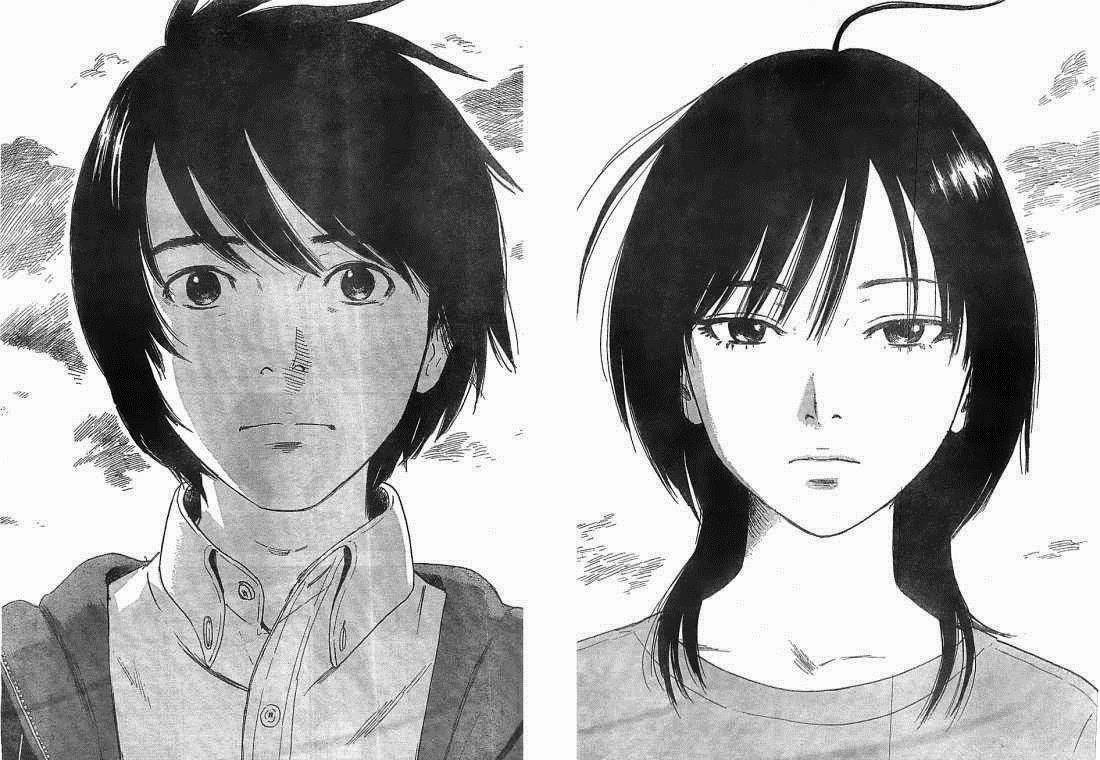
Sobre o conflito: não sei se entendi muito bem os temas em jogo. Acredito que seja sobre a oposição entre a normalidade e a perversão. Perversão, nesse contexto, não se refere a perversão sexual necessariamente, mas o desvio da moralidade esperada na sociedade. Mas eu não entendi qual foi a mensagem final. "Não há problema em ser comum"?
Depois de falar tudo isso, parece eu não gostei da obra. Não é verdade. Esses defeitos são frustrantes pra mim porque eles impedem que o mangá seja mais que "muito bom", mas só tenho esse sentimento porque foi muito bom. In the end of the day, a unica coisa que importa é o quanto a obra deixa um impacto durador, e Aku no Hana com certeza deixou.
SIMILAR MANGAS YOU MAY LIKE
 MANGA EcchiNazo no Kanojo X
MANGA EcchiNazo no Kanojo X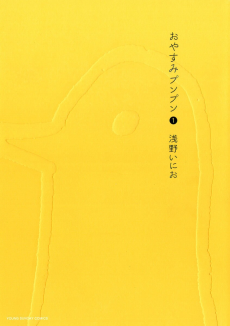 MANGA DramaOyasumi Punpun
MANGA DramaOyasumi Punpun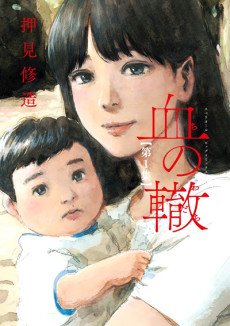 MANGA DramaChi no Wadachi
MANGA DramaChi no Wadachi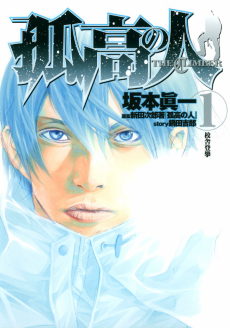 MANGA AdventureKokou no Hito
MANGA AdventureKokou no Hito
SCORE
- (4.05/5)
MORE INFO
Ended inMay 9, 2014
Trending Level 3
Favorited by 4,656 Users


